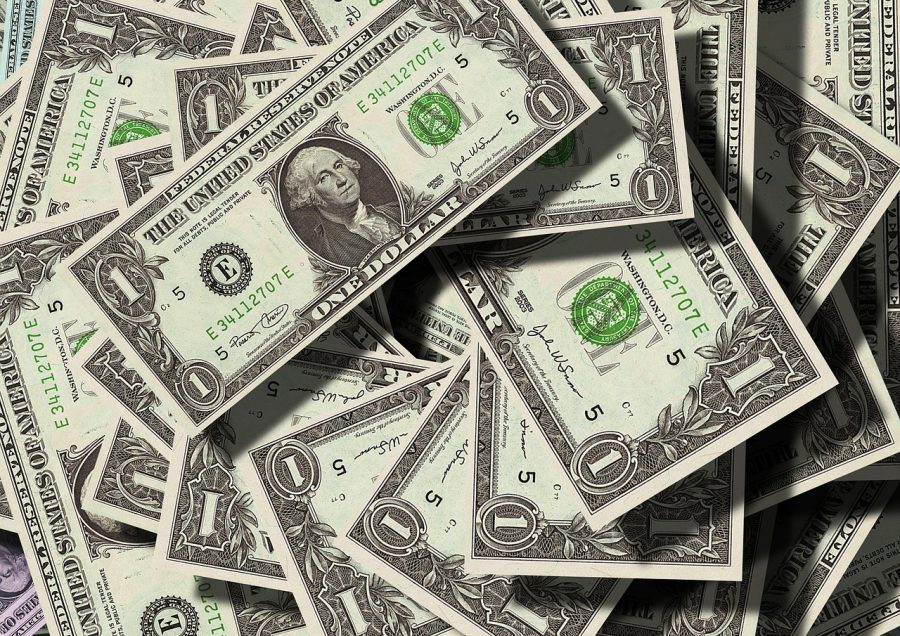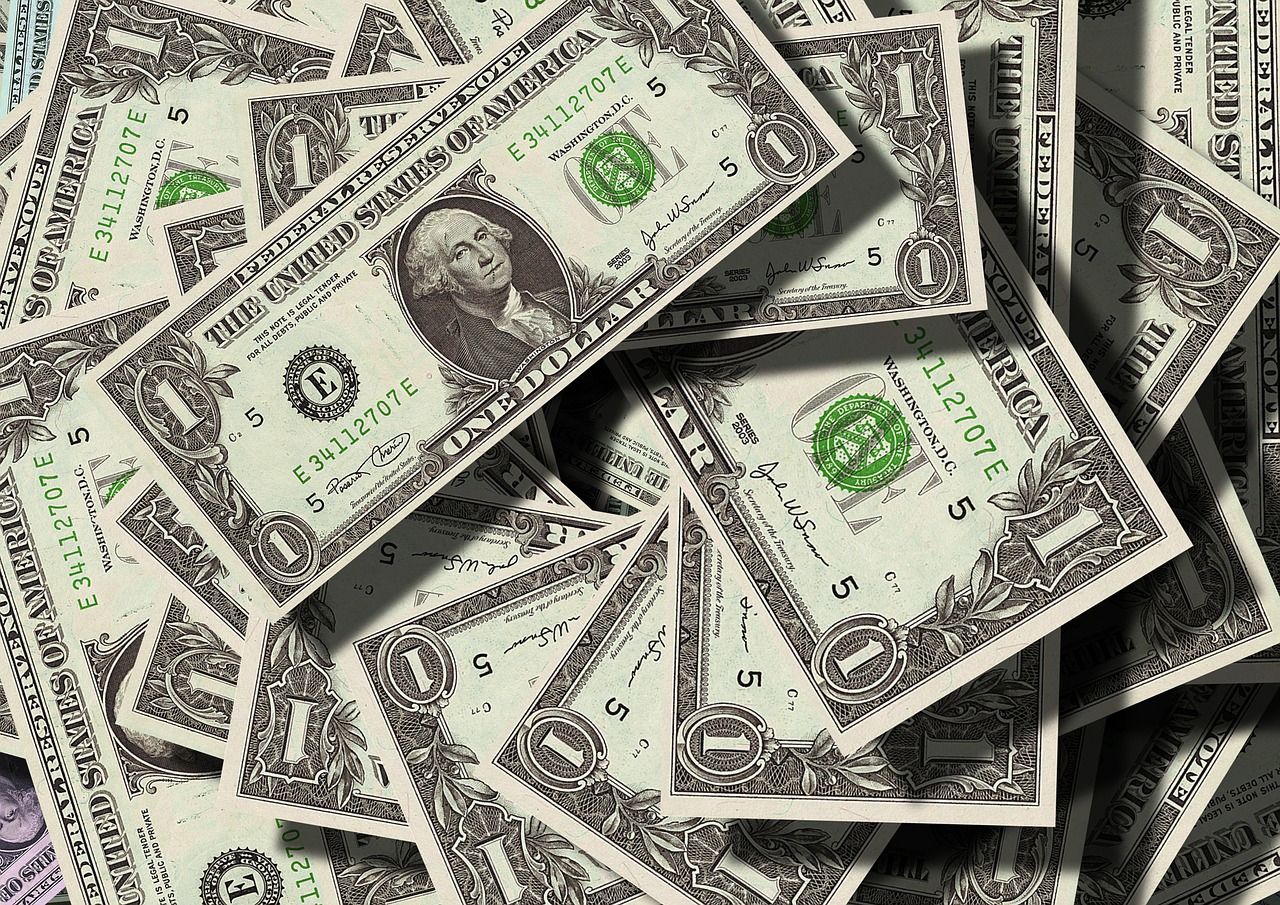
Dollar was on the defensive U.S. inflation test looms
The dollar was on the defensive on Monday after a mixed U.S. jobs report provided little directional conviction and as market focus turned to inflation data from the world’s two largest economies due this week.

Reuters: The dollar was on the defensive on Monday after a mixed U.S. jobs report provided little directional conviction and as market focus turned to inflation data from the world’s two largest economies due this week.
ALSO READ: International oil companies to resume operation in Libya
U.S. DOLLAR WAS ON THE DEFENSIVE
The U.S. economy added fewer jobs than expected in July, data on Friday showed, but it recorded solid wage gains and a decline in the unemployment rate. While the dollar fell to a one-week low against a basket of currencies in the aftermath of the data, its losses were capped as the report pointed to a still-tight labour market, suggesting the Federal Reserve may need to keep rates higher for longer.
The U.S. dollar index was last 0.08% higher at 102.14, edging away from Friday’s low of 101.73. Sterling fell 0.11% to $1.2737, while the euro lost 0.14% to last stand at $1.0994. “There was a narrative in there for everyone, depending on your bias,” said Pepperstone’s Head of Research Chris Weston of the jobs report. “We are seeing a cooling of the labour market, but it’s not collapsing. It’s doing what we hoped it would do.”
ALSO READ: Who is the richest person in the world today? Top 10 list – 7 August 2023
U.S. inflation data is due on Thursday, where expectations are for core inflation to have risen 4.7% on an annual basis in July. “It’s hard to see the pullback being big across the dollar pairs, because fundamentally the U.S. has still got the best growth, you got a central bank which is still very much data dependant, and I think there are risks this week that the CPI number comes out above expectations,” said Weston.
Also due this week is China’s July inflation print on Wednesday, with traders on the lookout for further signs of deflation in the world’s second-largest economy. “We see the country’s headline CPI to register a deflation this July after growth in consumer prices stalled in June,” said MUFG analysts in a note. “While the narrative of soft recovery in China likely remains intact in the short term, continued support from the Chinese government should boost the yuan.” The Chinese yuan hovered near a two-week low on Monday, with its offshore counterpart last 0.2% lower at 7.2042 per dollar.
On Friday, a Chinese official said during a press conference by the state planner that liquidity in the country’s banking system would be kept reasonably ample, though investors were left wanting for more amid Beijing’s slow roll out of support to revive its economy. Elsewhere, the Australian dollar edged 0.04% lower to $0.6568, while the New Zealand dollar gained 0.01% to $0.60985. The yen fell nearly 0.3% to 142.13 per dollar, after hitting a one-week high of 141.52 per dollar in early Asia trade. The Bank of Japan debated growing prospects of sustained inflation at their July meeting with one board member saying wages and prices could keep rising at a pace “not seen in the past,” according to a summary of opinions released on Monday.
ALSO READ: SA retailers’ credit usage surges, but not all sectors use capital effectively
BRITISH POUND
Reuters: The pound held steady just above a five-week low on Friday as traders continued to process the previous day’s 25 basis point Bank of England rate hike, and ahead of crucial U.S. jobs data. After lifting rates by 50 basis points in June, the BoE, on Thursday, hiked by 25 bps to 5.25%, but said high inflation meant rates would remain elevated for some time. “The shift in emphasis from the level of restrictive rates to their duration suggests that the Bank of England’s Monetary Policy Committee is guiding towards the end of the tightening cycle,” said BNP Paribas analysts in a note.
The pound was fairly unmoved by the decision, and was last at $1.27065, flat on the day and only a whisker below its close on Wednesday, the day before the meeting. BNP Paribas said this could partly “reflect that GBP has ‘done a lot’, having broadly weakened over the past few weeks, as markets have re-priced BoE expectations”. “That said, we do not think this happy medium will continue, and see scope for weakness to resume.”
The analysts said that either the BoE pauses or hikes just once more, meaning rates and the pound need to adjust lower still, or, if more aggressive tightening is needed, markets may expect a greater hit to the British economy, also weighing on the pound. Sterling was the best-performing major, developed-market currency against the dollar in the first half of the year, and reached as high as $1.3144 in mid July, when projections for peak BoE rates were well over 6%.
ALSO READ: There’s rich – and then there’s Elon Musk rich: How much is the SA-born billionaire worth?
The pound was also steady against the euro on Friday, with one euro worth 86.11 pence, largely in the middle of its recent range. The day’s main event for currency markets is U.S. non farm payroll data due at 1230 GMT. Analysts say current market pricing leaves the dollar at risk of a shift lower, including against the pound, if jobs come in below expectations, or higher, if above.
SOUTH AFRICAN RAND
Reuters: The South African rand recouped some losses against the dollar on Friday after the U.S. currency fell on employment data. At 1352 GMT, the rand traded at 18.4925 against the dollar, over 1% stronger than its previous close. The dollar last traded at 101.87, around 0.6% weaker against a basket of global currencies. Payrolls data out of the U.S. on Friday showed that moderately in the world’s biggest economy in July, sending the dollar into a tailspin and boosting the rand.
Despite Friday’s gains, the rand has slumped over 5% against the greenback this week on concerns over global economic growth amid an escalation in risk-off sentiment. “The domestic currency has had a torrid week, retracing sharply from overbought levels. The depreciation of the rand this week unfortunately unwinds a lot of progress seen in the weeks preceding,” said Shaun Murison, senior market analyst at IG.
ALSO READ: Who are the richest South Africans in the world today? – 7 August 2023
The rand slumped this week after rating agency Fitch on Tuesday downgraded the U.S. from AAA to AA+, fuelling risk-off sentiment and putting pressure on emerging market currencies. Anezka Christovova, an emerging markets strategist at JP Morgan, on Thursday said further rand weakness was expected after the South African currency deviated from normal drivers. The rand had performed well on reduced intensity in rolling blackouts in June, which drove the market to price out idiosyncratic risks, Christovova added.
However, the power cuts, locally referred to as “loadshedding”, increased in intensity in July. “Our economist expects a more sustained improvement in energy availability only in H2 2024,” Christovova said. Shares on the Johannesburg Stock Exchange were stronger, with both the blue-chip Top 40 and broader all-share up around 0.3%. South Africa’s benchmark 2030 government bond was stronger, with the yield down 14.5 basis point to 10.295%.
GLOBAL MARKETS
Reuters: Asian share markets were in a cautious mood on Monday after a mixed U.S. jobs report sparked a rally in beaten-down bonds, but new hurdles lay ahead in the shape of U.S. and Chinese inflation figures due later this week. MSCI’s broadest index of Asia-Pacific shares outside Japan was a fraction lower in thin trade, after losing 2.3% last week. Japan’s Nikkei turned flat, having found support at its July low. A summary of the last Bank of Japan meeting showed members felt making yield policy more flexible would help extend the life of its super-easy stimulus.
ALSO READ: Good news: Regulator challenges rampant Eskom tariff hikes
Chinese blue chips eased 0.9% with investors still disappointed at the lack of major and concrete stimulus steps from Beijing. EUROSTOXX 50 futures dipped 0.3% and FTSE futures 0.5%. Going the other way, S&P 500 futures added 0.3% and Nasdaq futures 0.5%. With roughly 90% of S&P 500 earnings reported, results are 4% better than consensus estimates with more than 79% of companies beating the Street. Results due this week include Walt Disney and News Corp. Data on U.S. consumer prices are forecast to show headline inflation picking up slightly to an annual 3.3%, but the more important core rate is seen slowing to 4.7%.
Analysts at Goldman Sachs see a downside risk to the numbers in part due to falling car prices, an outcome that might help keep the bond rally alive and kicking. In China, the market is looking for further signs of deflation with annual consumer prices seen down around 0.5%, and producer prices falling 4%. Any upside surprises would be a test for Treasuries which steepened markedly early last week ahead of a flood of new borrowing. In the event, a mixed payrolls report helped reverse much of the losses, particularly at the short tend.
Futures imply only a 12% chance of a Federal Reserve rate hike in September, and 24% for a rise by year-end. Michael Gapen, an economist at BofA, cautioned the market was still expecting too much policy easing next year given the recent run of resilient economic data. “We now expect a soft landing for the U.S. economy, not the mild recession we had previously forecasted,” wrote Gapen. “While the market implies between 120-160bps of Fed cuts in 2024 we look for only 75bps,” he added. “There’s simply less reason for the Fed to quickly pivot to rate cuts in 2024 when growth is positive and unemployment is low.”
ALSO READ: Fuel price: GRIM petrol and diesel news awaits in September 2023
As a result, the bank raised its year-end forecast for two-year and 10-year yields by 50 basis points to 4.75% and 4%, respectively. On Monday, two-year yields were ticking higher again to 4.82%, with the 10-year up at 4.06%. The pullback in yields took some steam out of the U.S. dollar, which was a shade firmer at 142.12 yen but short of last week’s top of 143.89. The euro held at $1.0988 , having bounced from a trough of $1.0913 last week. The dip in the dollar helped gold hold at $1,940 an ounce , after Friday’s rally from $1,928.90.
Oil prices paused having rallied for six straight weeks amid tightening supplies. The 17% climb in Brent combined with upward pressure on food prices from the war in Ukraine and global warming, is a threat to hopes for continued disinflation across the developed world. Brent was off 8 cents at $86.16 a barrel, while U.S. crude also fell 8 cents to $82.74.
